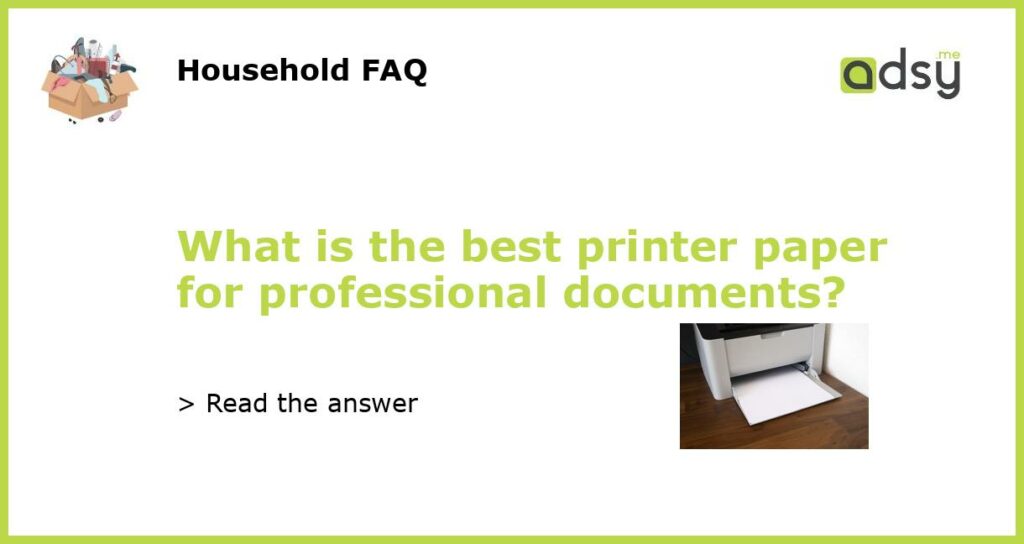Choosing the Best Printer Paper for Professional Documents
When it comes to printing professional documents, the type of paper you use can make a significant difference in the final result. Whether you are printing resumes, business proposals, or important presentations, you want a paper that will enhance the overall quality and leave a lasting impression. In this article, we will discuss the key factors to consider when choosing the best printer paper for professional documents.
Paper Weight and Thickness
One of the essential considerations when selecting printer paper for professional documents is the weight and thickness of the paper. The weight of the paper is measured in grams per square meter (GSM) and indicates how durable and sturdy the paper is. Typically, heavier paper with a higher GSM offers better quality and a more professional feel. Look for paper with a weight of around 90 GSM or higher for professional documents.
Paper Finish and Texture
The finish and texture of the paper also play an important role in the overall appearance of professional documents. There are three main types of finishes to choose from:
- Matte Finish: Matte paper has a non-glossy, smooth finish. It is ideal for documents that need to be easily readable without any glare. Matte paper is often used for business reports and legal documents.
- Glossy Finish: Glossy paper has a shiny, reflective finish. It offers vibrant colors and sharp images, making it suitable for documents that require visual impact, such as brochures and flyers.
- Silk Finish: Silk paper has a semi-gloss finish that falls between matte and glossy. It provides a touch of elegance and is commonly used for professional presentations and marketing materials.
In addition to the finish, consider the texture of the paper. Some documents may benefit from a smooth texture, while others may require a more textured surface for a sophisticated look.
Opacity and Brightness
Opacity refers to the degree to which a paper allows light to pass through it. The higher the opacity, the less likely the text or images will show through from the other side of the page. For documents that may require printing on both sides, such as double-sided brochures or manuals, choose a paper with high opacity.
Brightness, on the other hand, refers to the whiteness of the paper. Higher brightness levels result in sharper, more vibrant prints. Look for papers with brightness ratings above 90 for professional documents that require clarity and impact.
Compatibility with Printing Technology
When selecting printer paper for professional documents, it is important to consider its compatibility with different printing technologies. Not all printers are designed to handle certain paper types or weights. Laser printers, for example, work best with paper specifically designed for laser printing, while inkjet printers can typically handle a wider range of paper types. Always check the printer specifications and recommendations to ensure the paper you choose is compatible.
Environmental Considerations
Lastly, it is worth considering the environmental impact of the printer paper you choose. Look for papers that are certified by sustainable forestry organizations, such as the Forest Stewardship Council (FSC). These certifications indicate that the paper is sourced from responsibly managed forests. Additionally, consider papers that are made from recycled materials or have high post-consumer waste content to minimize the environmental footprint.
By considering these factors – paper weight and thickness, finish and texture, opacity and brightness, compatibility with printing technology, and environmental considerations – you can choose the best printer paper for your professional documents. Remember, the right paper can elevate the quality and presentation of your work, leaving a strong impression on clients, colleagues, or potential employers.






